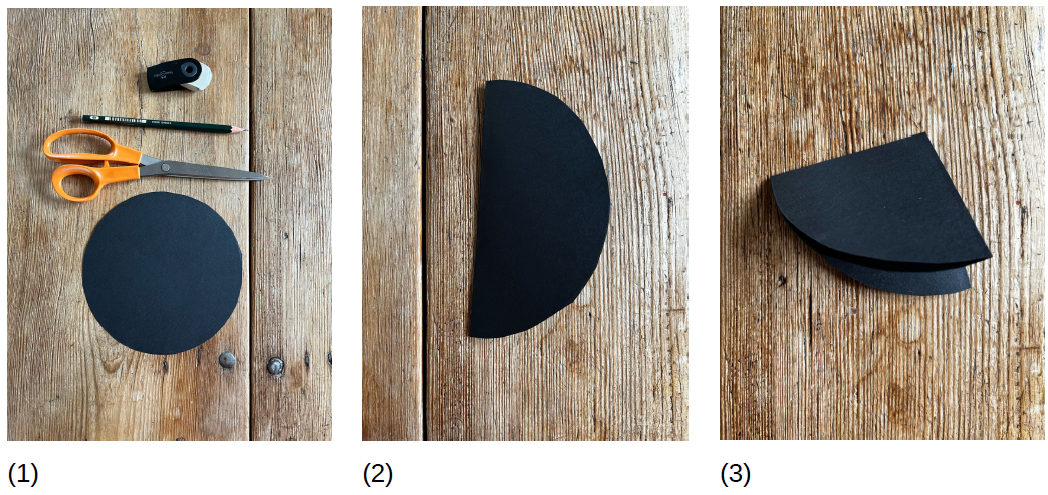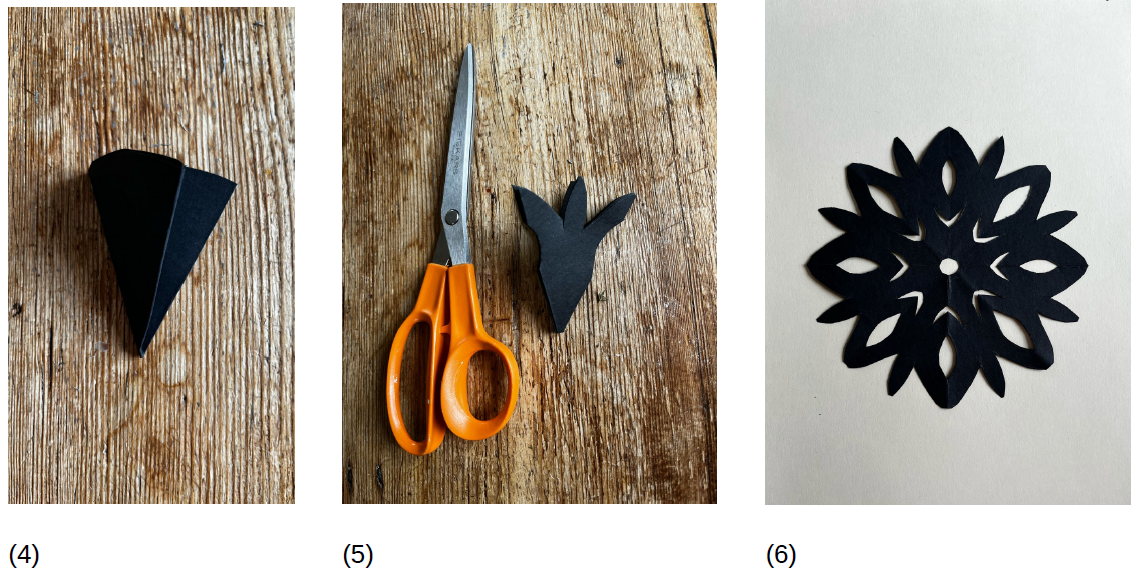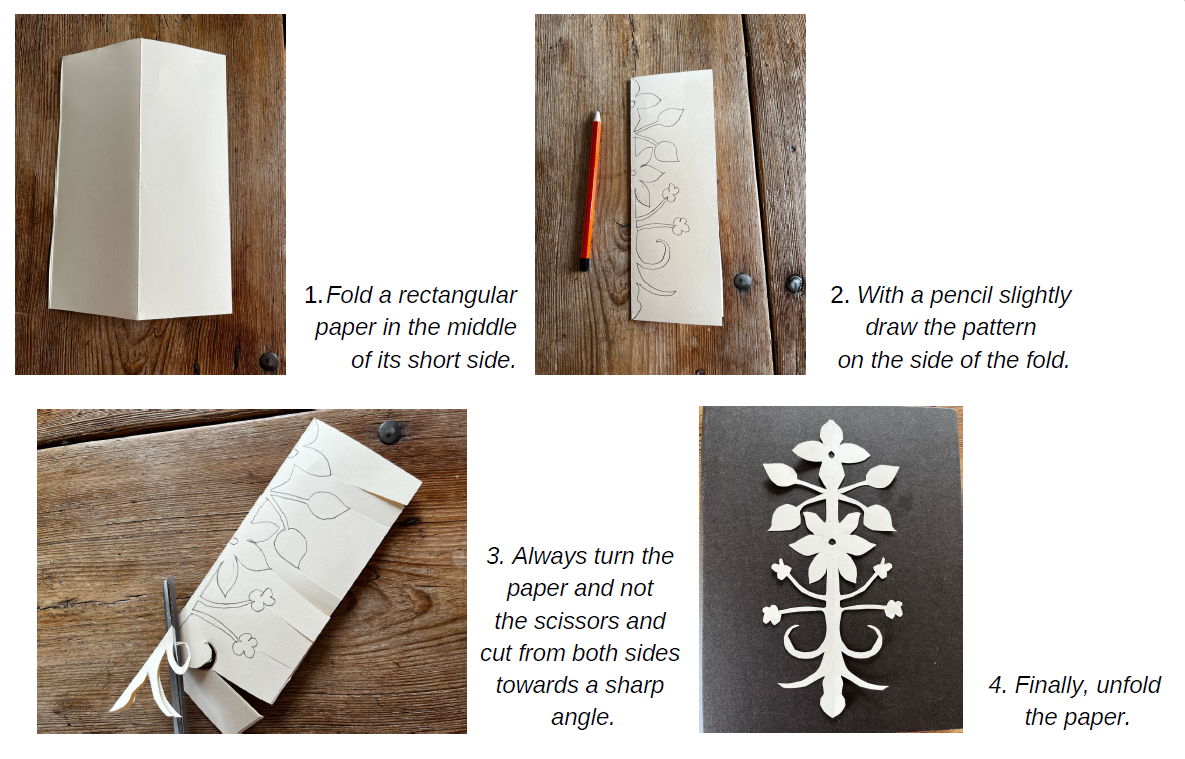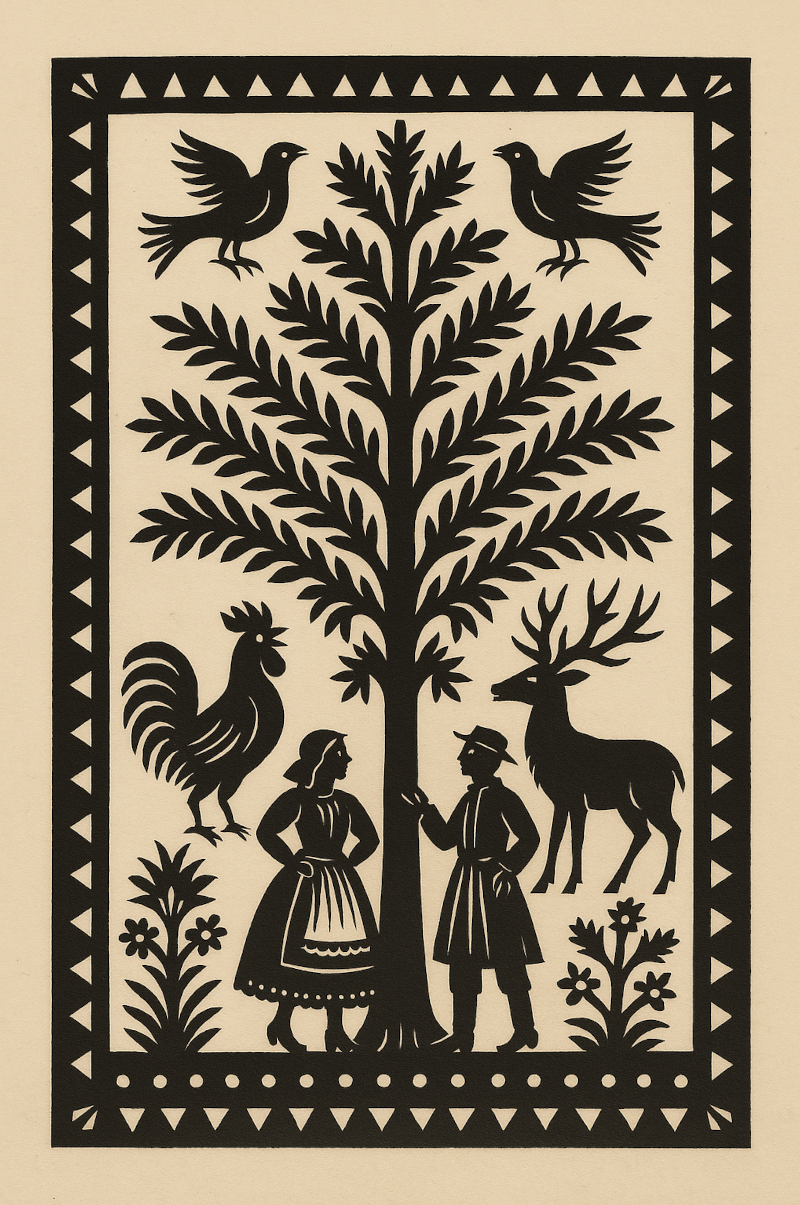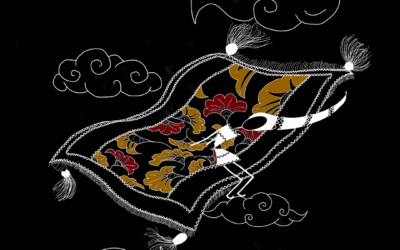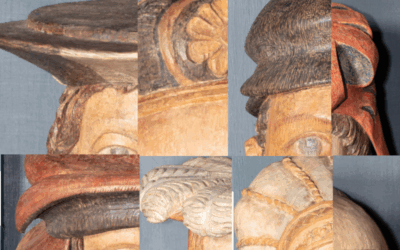Fold, Snip, Paste! – The Art of Polish Paper Cuts
Paper cuts are a long-standing tradition of Polish peasant culture. The best-known, from Kurpie
and Łowicz, were cut with sheep shears. They range from simple to intricate designs, from single-
colour cuts to collages and illustrated stories and have been used to decorate walls and windows.
This makes them a perfect means to combine a creative activity with heritage language learning.
Fold, Snip, Paste! – The Art of Polish Paper Cuts
Participants explore traditional Polish paper cutting styles to create unique artworks that tell a story through shapes, colours, and cultural motifs.
60-120 min (for introduction and a single activity)
7 or above
Language Skills
A1-C2
Up to 20 participants
By exploring the Polish art of paper-cutting in the Kurpie, Łowicz and Kodry styles, participants learn about cultural traditions, practice fine motor skills and express their creativity through storytelling with shapes and colours. They discover regional history, develop patience and precision, and gain confidence by presenting their personal designs – whether traditional, modern or completely imaginative. This hands-on activity promotes artistic expression, intercultural learning and concentration in a fun and inclusive environment.
Small and large scissors, construction paper, glue, pencils, erasors, rulers, cutting knives and mats formore intricate designs, designs, hole puncher, written instructions, equipment for video projection (optional).

Languages Available
Step-by-step Guide
1. Prepare handouts with illustrated texts or set up the equipment for an online video projection.
2. Welcome the participants and suggest an ice-breaker excersise.
Welcome everyone to the workshop and explain its nature and purpose. If the participants don’t know each other yet, you may want to organise a short icebreaker during which they have an opportunity to present themselves and get to know each other. As a warm-up excise, use Polish tongue twisters.
3. Tell the story of traditional Polish paper cuts (wycinanki):
Briefly introduce the participants to the Polish folk tradition of paper cuts by using the sourceslisted below. Explain the two most widely known main styles as practised in Kurpie and Łowicz, and how wycinanki were traditionally cut with sheep shears and used for decorating rooms during festive seasons, such as Christmas, and even entire house walls. You can also show participants one longer or two shorter videos or add examples of paper cuts from other countries (e.g. Ukraine, Belarus or, in a different style, Japan). Clarify why you have chosen a particular style for your workshop (activities 2, 3 or 4).
4.1 Create your own paper cut in the Kurpie style.
Kurpie paper cuts are among the most popular in Poland. They appeared in the middle of the 19th century in the Kurpie Green Forest (PuszczaZielona) of Mazovia, north of Warsaw, after the first Polish paper mill in Jeziorna, Warsaw, brought glossy coloured papers on the market.
OR
4.2 Compose a paper cut in the Łowicz style.
Wycinanka in the Łowicz region, west of Warsaw, have taken a very different form from those of the Kurpie. Instead of producing paper cuts from asingle piece of paper, the folk artists of Lowicz use small coloured elements superposed on each other and combine them in a kind of collage thathistorically consists of floral motifs, often together with animal figures, such as roosters.
OR
4.3 Tell a Story with a Paper Cut (kodry-style).
Traditionally these single-colour rectangular or square-shaped wycinanki depict scenes from rural life (weddings, harvest, going to the market, etc.), folk tales or religious themes, and usually include animals (roosters, birds, deer) and human figures.
5. Presenting and discussing the paper cuts:
– Gather the participants and walk from table to table and ask the paper cut artists in turn to describe their work and the others for their comments. Remember that paper cuts that use glue should not be moved before the glue has dried.
– Don’t forget to demand some feedback from the participants on the workshop. Think of exhibiting the wycinanki if you are going to use the same room in future.
For detailed description of activities, see PDF files!

For Educators & Teachers
Preparation
- Make yourself familiar with the online resources you are going to use.
- Assemble a sample of wycinanki that participants can consult for inspiration.
- Create or download templates that can be used by less adept or younger participants.
- Consider creating paper cuts ahead of the workshop to get a better understanding and to efficiently support participants or ask a moreexperienced person to assist you.
- Ensure that all necessary materials will be available.
Expected output
- Learners will increase their vocabulary and have a better grasp of a specific kind of language, i.e. that of instructions for a practical activity.
- New vocabulary is better memorised through the accompanying creative activities and communicative practice.
- Participants learn more about the art of Polish paper cuts and its history.
- Enhanced creativity, fine motor and soft skills such as team work, peer learning and communication skills.
Adaptation/Application of the method
a group with varied language proficiency
The workshop can be held in the heritage or the majority language with elements of the former, depending on proficiency levels. If these vary considerably, consider letting participants work in tandems or small groups (incl. children and their parents). If appropriate, paraphrase difficult words or sentences in easy language or give translations.
other languages
Similar activities associatred with folk art can be conducted for other languages by using this learning module as a template, but this will require considerably more preparation, such as for identifying appropriate online resources and creating a lesson plan.
bilingual/multilingual options
Generally, the activities described here can be used in a bilingual or multlingual workshop to acquaint particpants with folk art traditions and techniques in other countries. Paper cuts have been and are widely practised in many countries and the respective traditions can be contrasted
during explanations given to the participants.
cultural context
Paper cut traditions exist in many countries (Belarus, Ukraine, Switzerland, China, Japan, etc.) but are no longer confined to them. If appropriate, you can also choose another folk art tradition and adapt this learning module.
other age groups
The workshop has been designed for young people and adults who enjoy practical or artistic activities. It can be adapted for younger children bysimplifying the tasks and using easy language. Wycinanki of an intricate design require tools, such as a pen knife or disposable scalpels, that maycreate health hazards for younger children. Ensure participation and motivation by adapting the module to your target group. Cut short, forexample, explanations of the history of the wycinanki when working with very young children.
outdoor version
The workshop can be conducted outdoors, at tables in a garden or park, under favourable weather conditions.
distance learning options
– Online or blended settings are possible but will require adaptation and produce less interaction between participants.
– To avoid lengthy online sessions, activities should be split and some of the tasks be conceived as individual homework. Participants wouldonly meet online for presentations by the facilitator and to discuss individual results in a plenary session.
– Be aware that it will be difficult to offer practical support during the cutting, although a smartphone camera can be used as a mobilerecording device.
– Distance-learning needs more self-discipline and autonomous learning, which limit participation to older children and adults.
challenges
- Although the art of paper cutting is accessible for all members of the target group, that is children of age 6 or above, young people and evenadults, motivation and application are required to enjoy creating wycinanki. The facilitator, too, needs to be interested in them, but it is alsopossible to cooperate with a more experienced person able to provide practical advice and to help with the designing and cutting.
- To avoid difficulties of comprehension of less advanced learners in a group with different language proficiency levels, stick to easy languageor provide a list of words with explanations or translations that you share with your participants, if you don’t want to use the majoritylanguage.
- Complex designs require tools that are not as common as scissors and glue.
options for parents
- Parents interested in wycinanki can easily create them together with their child or children or, better, participate in the course of anintergenerational workshop. As mentioned above, printed and video tutorials are available in great numbers.
Developed by / Origin / Original language
Katarzyna Włusek & Rupert Hasterok, Comparative Research Network e. V. – English, Polish
References, and Resources
All images, except those from the testing workshop (drawings, strips with idioms), have been published under a Creative Commons Licence and can be freely used on condition of proper acknowledgement.
Images from our testing workshop: © Katarzyna Włusek (Comparative Research Network e. V.)
A short introduction in English, Polish and other languages is provided by Arlene Aniskiewicz’s article ‘Folk Art at Home: A DIY Guide to Polish Paper Cut-Outs’ here.
If you want to delve deeper into the matter: https://www.sheldonbrown.com/org/joyce/wycinanki.html.
Wycinanki patterns and examples from the Ethnographic Museum in Warsaw here.
The Museum Kultury Kurpiowskiej w Ostrołęce online lecture (in Polish with auto-generated subtitles in other languages) on traditional Polish paper cuts here.
Video tutorials on the YouTube Kanał Stowarzyszenia “Pracownia Etnograficzna” in English and Polish here.
Tutorials for children of primary school age can be found
here, here and here.
More about Kurpie paper cuts in a digital brochure published in Polish and English by the Kurpie Culture Museum in Ostrołęka here.
Similar Activities
The Intruder – Card Game (DUPLICATE)
The Intruder is a versatile and interactive multilingual card game designed to enhance language learning across multiple levels (A1-C2) while fostering creativity, imagination, and cultural awareness. Perfect for classrooms or family gatherings, this game offers both online and printed versions, allowing players to explore language in a fun, dynamic way.
Art and Fashion – The Wawel Heads
Museum visits are an excellent way to combine heritage language teaching and art. But what if no interesting museums are nearby? Here, virtual museums are a good alternative. In this workshop we aim to show how freely available online resources published by museums can be used for a wide variety of art-based learning activities.

